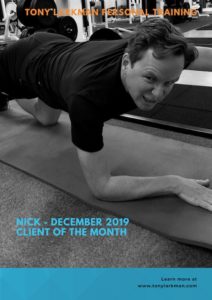CYCLING AND ANTERIOR PELVIC TILT (APT)
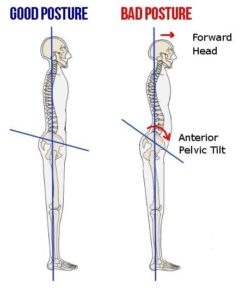
I’m pleased to announce cycling enthusiast Nick, December 2019 personal training client of the month after 3 months of strength training to correct anterior pelvic tilt.
Nick has had back issues which is a common theme among many cyclists and anyone who sits down for long periods each day.
Nick was diagnosed with Anterior Pelvic Tilt (APT). This was causing him back pain during training rides and was negatively impacting everyday life.
APT is a change in posture that happens when the front of the pelvis rotates forward and the back of the pelvis rises. As a result, the shape of the spine is altered.
Nick contacted me in October to discuss how to help him improve his posture, increase strength and enjoy pain-free cycling again.
APT is often caused by shortening of the hip flexors (iliopsoas) which are found connecting the top of the thigh bone (femur) to the ilium. These group of muscles act to lift the knee and bring the thigh towards the abdomen.
In addition, the hip extensors lengthen and become weak. The primary hip extensors are the gluteus maximus and the hamstrings.
Strong glutes are essential for pelvic alignment. Strong hamstrings help you to run, walk and jump and assist the glutes. However, as the quads and hip flexors are the prominent muscles used in cycling, the body becomes unbalanced. A strength and conditioning programme is essential to keep the body correctly aligned.
Nick’s first training session took place in mid October. The programme focussed on the glutes, hamstrings and lower back. This coincided with a plan to increase flexibility in the hip flexors and quadriceps plus improve posture and mobility in the thoracic region of the back.
FITNESS
Nick possesses a high level of cardiovascular fitness from many years of cycling around Bath and Somerset plus previously rowing in London. The plan was for Nick to continue his fitness regime on the bike and to concentrate solely on the weight training in the gym through personal training sessions.
STRENGTH
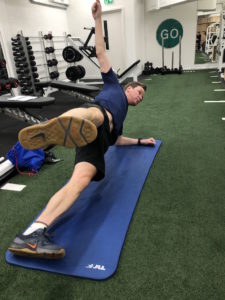
Nick started his personal training strength sessions at Stanza Fitness in Bath by initially using his bodyweight as resistance.
Exercises included bodyweight squats. At first, Nick struggled to perform a squat without excessive lumbar flexion (over flexing from the hips) due to tightness in the hip flexors. A common issue with anterior pelvic tilt.
The programme also included core exercises such as planks, lunges to strengthen glutes and hamstrings, side lunges for abductor (inner thigh) strength, bridges to target glutes, press-ups and supine rows for upper body strength.
These exercises were designed to strengthen weak areas and promote mobility. This is a prerequisite for resistance weight lifting, the natural progression from bodyweight exercises.
COMPOUND WEIGHT TRAINING
Compound weight training is described as exercises that work multiple groups at the same time.
After a couple of weeks, Nick progressed to compound lifts where we added weight plates to movements such as squatting, pressing, pulling and lunging. Nick’s strength increased weekly during each personal training session and his posture improved.
The anterior pelvic tilt which was causing him daily pain was no longer noticeable.
The big 5 lifts introduced were barbell back squats, trapbar deadlift, barbell bench press, dumbbell rows and dumbbell push press. The exercises, sets and reps frequently changed to encourage progression.
In addition to the weekly personal training session, Nick managed to add in an extra weight session in his local gym.
A good progression to the personal training programme was barbell hip thrusts which is a great exercise to develop glutes and hamstrings. This exercise supports back squats, deadlifts and any form of plyometrics or sprinting. In addition, it strengthens the lower back and together with back extensions, these exercises help to prevent injury and encourage good posture.
An added progression to the personal training programme is incline and decline dumbbell and barbell bench press. Flat barbell bench press concentrates on one area of the chest. By adding incline and decline movements, we targeted different parts of the chest (pectoralis major, pectoralis minor, serrates anterior and subclavius) and strengthened the shoulder joint.
Olympic lifts will shortly be added to the personal training sessions as Nick develops his technique. The clean and press is a great compound movement recruiting many parts of the body and developing functional fitness levels.
In addition, parallel dips will be added to develop upper body strength. Initially, resistance bands will be used to assist the movement.
A big goal for Nick is to be able to perform pull-ups. Pull-ups are one of the best ways to develop back strength and improve functional fitness levels. They will also improve grip strength which is vital to a full range of compound lifts.
CORE
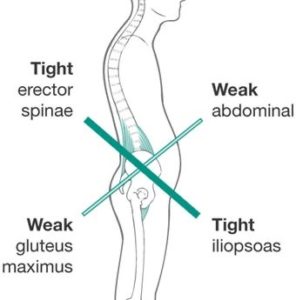
The core is directly involved in producing power through the movement and the pelvic floor muscles are also strengthened with compound lifts.
Crunches are not a great exercise for a cyclist.
Crunches performed badly involve spinal flexion which is rounding of the lower back to allow you to bend forward at the waist. This movement exaggerates issues related to sitting and cycling.
In addition, crunches can contribute to herniated discs. This is due to repeated flexion of the spine which can cause compression of your spinal discs, causing them to bulge and press on nerves. Rapid compression and decompression degenerates the fibrous outer walls of your discs, causing them to herniate over time.
As a result, Nick is focussing on planks, side planks, wood chops, core presses and back extensions.
FOAM ROLLING
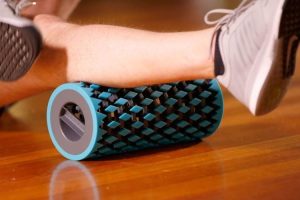
Foam rolling works by acting as a self-myofascial (SMR) release on the targeted muscles by eliminating adhesions in the muscles and connective tissue. In addition, foam rolling increases blood flow to the muscles and creates better mobility and reduces inflammation. Unlike static stretching, foam rolling can be added to the workout as a warm-up, cool-down or included into a recovery day.
Essentially, foam rolling allows the muscles to increase their range of motion by reducing the fascial resistance that will inhibit the movement, For example, by foam rolling the quadriceps, Nick’s hips will have a better range of motion. This will help him to perform some of the compound movements producing greater results from the workout.
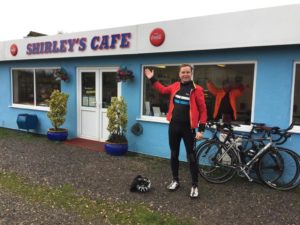
THE JOURNEY CONTINUES – SKIING AND RACING!
Nick’s improvements have been achieved with speed. His thoracic posture is better. The APT has been corrected and he continues to improve his strength.
So what next……..
Good posture, a strong core, better flexibility, improved mobility and greater strength. This will enable Nick to continue cycling faster and pain-free up the big hills around Bath. And by enjoying pain-free cycling, his fitness levels will increase as training frequency improves.
Nick is now at a stage where he can focus on a particular goal or race in mind. This will involve periodising his fitness and strength programme to have a strong performance at an event.
Nick will be enjoying some skiing this winter in the Alps. Knee and BOSU exercises to increase balance and proprioception are to be programmed in for the next few weeks. As well as targeting knee strength and stability, exercises have been created to increase ankle support and calf strength.
Nick has focussed on strengthening the body to enable him to continue cycling and enjoying life. He is an inspiration to many with his tenacity, dedication and drive. I’ve no doubt he will continue to improve on the bike, in the gym and on piste.
Well done Nick and enjoy the après-ski.


